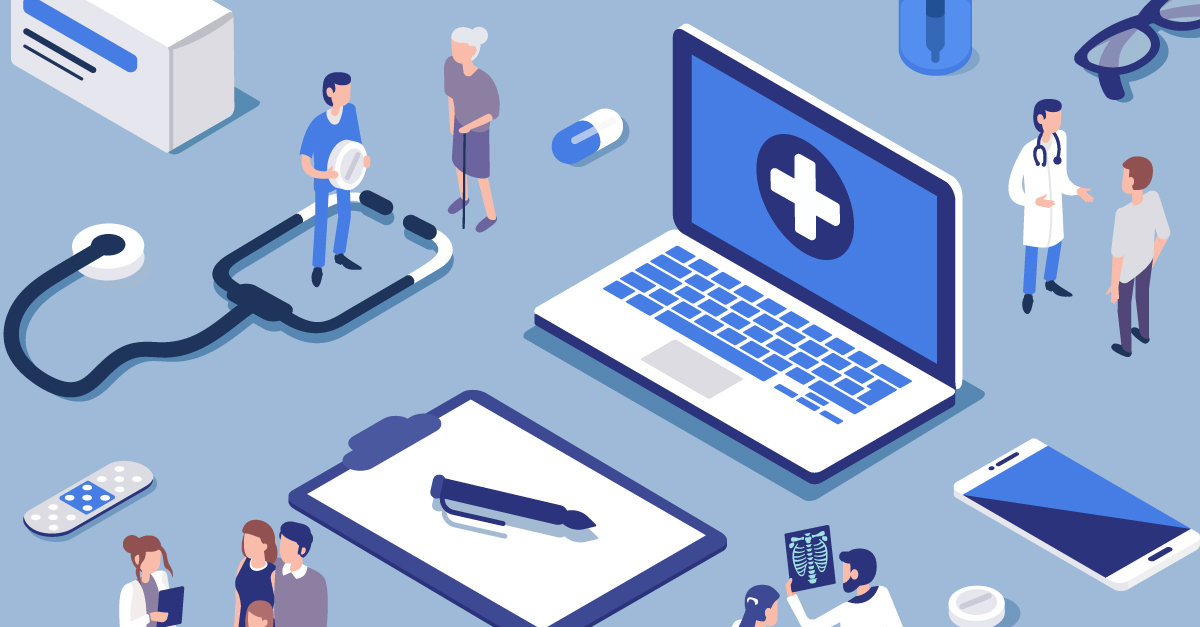In today’s fast-evolving healthcare landscape, accurate and efficient management of patient data is essential for improving patient care, ensuring compliance, and optimizing healthcare operations. One of the key innovations that have emerged in healthcare IT is patient data registry software. This software allows healthcare providers to collect, manage, and analyze patient information in a centralized and organized manner, leading to improved patient outcomes, enhanced clinical decision-making, and streamlined healthcare operations.
This blog explores the significance of patient data registry software in healthcare management and the key benefits it offers. It will also touch upon how software development consulting, patient registry software development, and healthcare IT solutions play an important role in enhancing these tools and ensuring they meet the specific needs of healthcare providers.
What is Patient Data Registry Software?
Patient data registry software is a specialized system designed to collect, store, and manage information related to patients’ health, treatments, and medical histories. These registries gather vast amounts of data from a variety of sources including electronic health records (EHRs), laboratory results, medical imaging, and patient surveys. The data is then organized and analyzed to help healthcare professionals make informed decisions regarding patient care.
Patient data registry software offers an efficient solution for tracking patients’ conditions, medications, and treatment progress over time. It is particularly useful for long-term care providers, hospitals, clinics, and research organizations that need to monitor a large number of patients with chronic conditions, rare diseases, or specific treatments.
1. Improving Patient Outcomes
Patient data registry software enables healthcare providers to have a holistic view of a patient’s health history. By storing a wealth of information in a structured format, healthcare professionals can quickly access the most up-to-date data when making clinical decisions. This can lead to:
- Timely Interventions: With accurate patient records, doctors can make timely interventions, which is crucial for patients with chronic conditions such as diabetes or heart disease.
- Personalized Care: By analyzing the data from the registry, healthcare providers can tailor treatment plans to individual patients based on their unique health profiles.
- Better Monitoring: Healthcare providers can monitor patient progress over time and adjust treatment protocols when necessary to improve overall outcomes.
With patient registry software development, healthcare organizations can ensure that the software aligns with their needs, providing a comprehensive view of patient health that enhances care quality and outcomes.
2. Supporting Data-Driven Decision Making
The power of patient data registry software lies in its ability to analyze large datasets to uncover insights that may not be immediately visible. For healthcare providers, this can lead to better decision-making in several ways:
- Evidence-Based Medicine: By aggregating patient data across different demographics and conditions, healthcare providers can make more informed decisions based on real-world evidence, improving the accuracy of diagnoses and treatment options.
- Predictive Analytics: Patient data registry software often includes advanced analytics tools that can predict potential health risks or complications. For example, based on historical data, the system could alert clinicians to potential risk factors for a patient, allowing for preventive measures before a condition worsens.
- Quality Improvement Initiatives: By analyzing data from patient registries, healthcare organizations can identify trends, gaps in care, and areas that need improvement, which is essential for quality improvement initiatives.
The ability to leverage data for decision-making is a critical advantage of healthcare IT solutions and plays a central role in improving the efficiency and effectiveness of healthcare delivery.
3. Enhancing Healthcare Research and Clinical Trials
Another significant advantage of patient data registry software is its application in healthcare research and clinical trials. Researchers can use the data stored in registries to:
- Identify Patterns: By analyzing patient health data, researchers can uncover patterns and trends that help in understanding diseases and their progression.
- Recruit Participants for Clinical Trials: Patient registries provide researchers with a readily accessible pool of potential participants who meet the specific criteria for clinical trials.
- Accelerate Research: By having access to a large volume of patient data, researchers can perform more comprehensive studies, potentially accelerating the development of new treatments, drugs, and therapies.
With patient registry software development, organizations can ensure that their registry system integrates seamlessly with research workflows and complies with regulatory standards.
4. Ensuring Regulatory Compliance and Reporting
The healthcare industry is heavily regulated, and organizations must adhere to strict guidelines for patient data privacy and reporting. One of the benefits of using patient data registry software is that it can help healthcare organizations ensure compliance with these regulations.
- HIPAA Compliance: In the United States, healthcare organizations must comply with the Health Insurance Portability and Accountability Act (HIPAA), which mandates strict security measures for patient data. Patient data registry software includes robust security features such as encryption, access controls, and audit logs to ensure compliance with HIPAA requirements.
- Efficient Reporting: Healthcare providers are often required to submit reports to regulatory bodies or insurance companies. Patient registry software can automate much of this reporting process, reducing the time and effort needed to generate reports and ensuring they are accurate and timely.
- Data Integrity: Patient data registry software helps ensure that the information being entered is accurate, consistent, and up-to-date, which is crucial for maintaining compliance with healthcare regulations.
By working with software development consulting firms, healthcare organizations can build custom solutions that meet regulatory standards and address their unique compliance needs.
5. Streamlining Administrative Tasks
In addition to its clinical and research benefits, patient data registry software plays a significant role in streamlining administrative tasks. Manual record-keeping and data entry are often time-consuming and prone to errors. With registry software, healthcare organizations can:
- Reduce Administrative Burden: By automating data entry, report generation, and data tracking, healthcare providers can reduce the amount of time their staff spends on administrative tasks. This, in turn, allows staff to focus on more critical activities like patient care.
- Improve Coordination: Patient registry software helps facilitate better coordination among healthcare teams by providing a centralized platform where information can be easily accessed by authorized personnel across different departments.
- Enhance Billing and Reimbursement: Accurate patient records play an important role in billing and reimbursement processes. By maintaining detailed, up-to-date records, healthcare organizations can ensure that they are reimbursed correctly and on time.
As healthcare organizations look for ways to optimize their operations, healthcare IT solutions like patient data registry software are an essential tool for increasing efficiency and reducing costs.
6. Facilitating Population Health Management
Population health management involves improving the health outcomes of a group of individuals by monitoring and managing their healthcare needs. Patient data registry software is a key tool in this area, as it allows organizations to track the health status of large populations and:
- Identify At-Risk Populations: By analyzing registry data, healthcare providers can identify groups of patients who are at higher risk for certain diseases or conditions, enabling them to offer targeted interventions.
- Monitor Health Trends: Healthcare providers can use registry data to track the prevalence of chronic conditions, infectious diseases, and other health trends, allowing them to plan resources and interventions more effectively.
- Measure Outcomes: By tracking patients’ progress over time, healthcare providers can assess the effectiveness of interventions and modify strategies to improve outcomes.
With the help of patient registry software development, healthcare organizations can create robust tools for effective population health management that are tailored to their specific goals.
Conclusion
In conclusion, patient data registry software is an indispensable tool for modern healthcare organizations. It offers a wide range of benefits including improved patient outcomes, data-driven decision-making, enhanced healthcare research, regulatory compliance, streamlined administrative tasks, and effective population health management.
By investing in patient registry software development, organizations can ensure that their systems are customized to meet their unique needs while complying with industry regulations. Working with software development consulting and healthcare IT solutions providers can further enhance the functionality, security, and efficiency of these systems. As the healthcare industry continues to evolve, the role of patient data registry software in improving patient care and operational efficiency will only become more significant.






